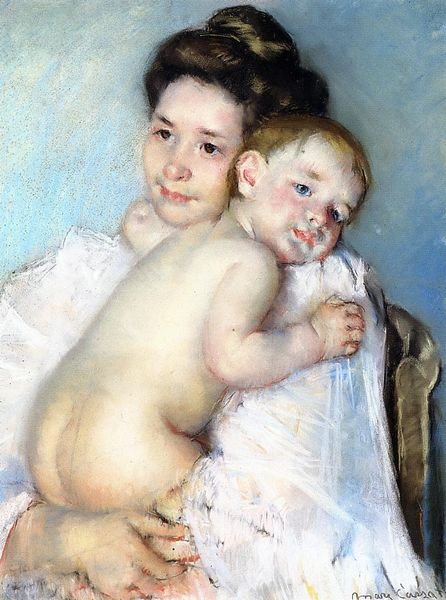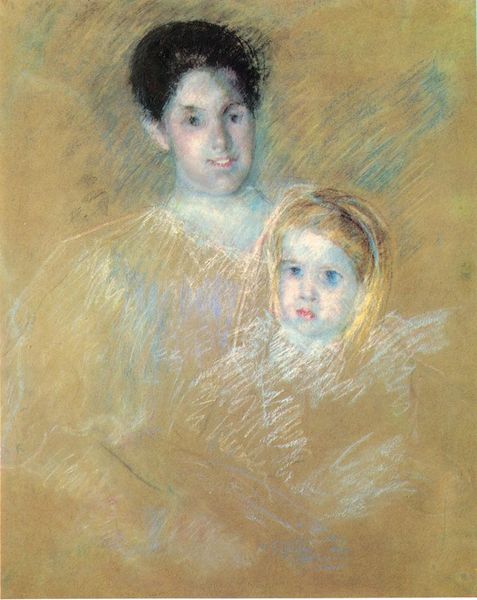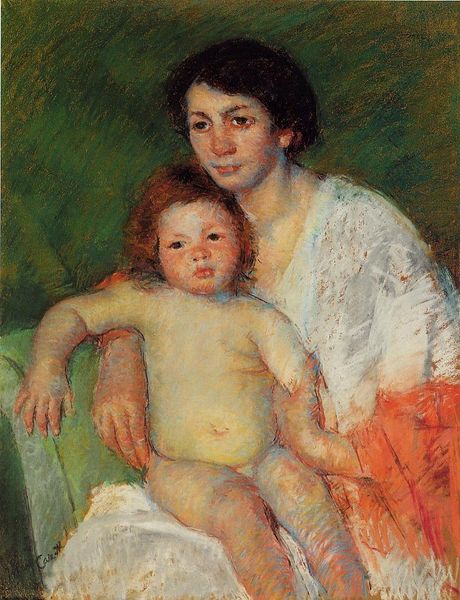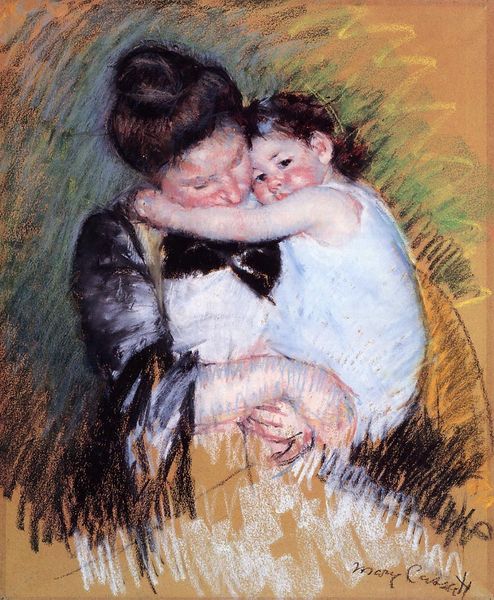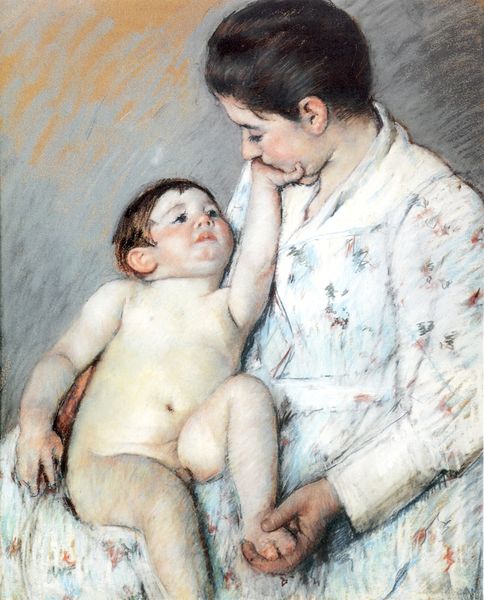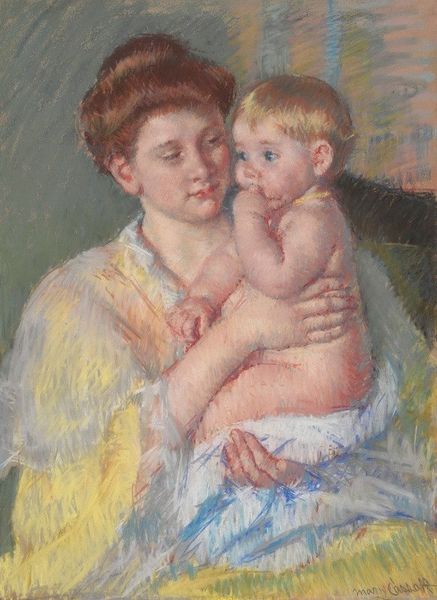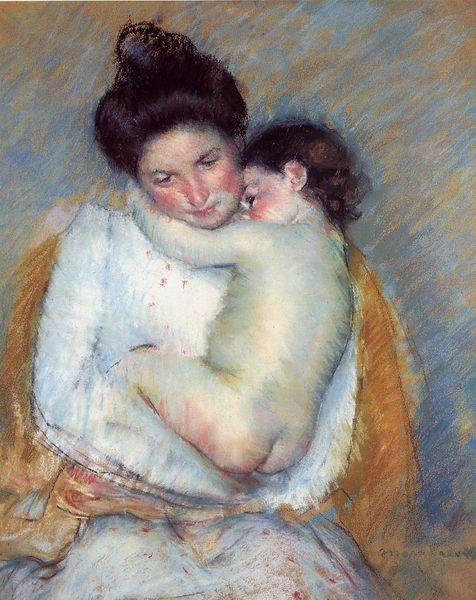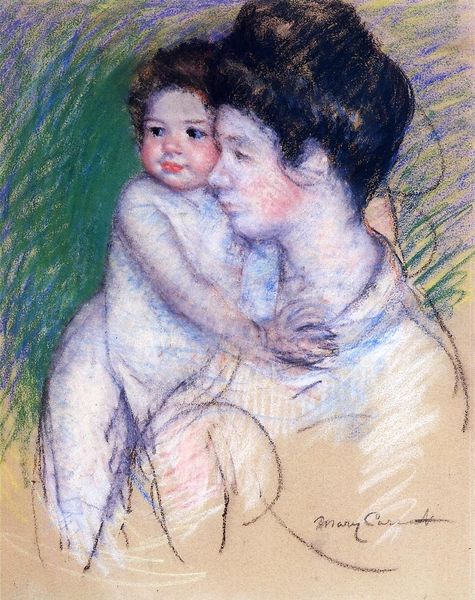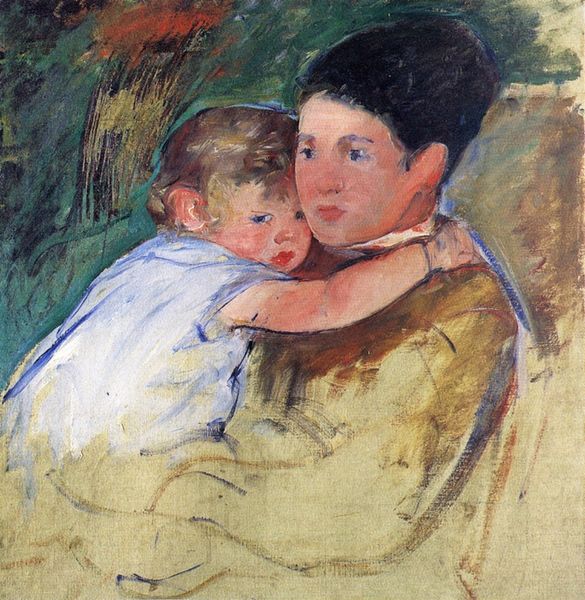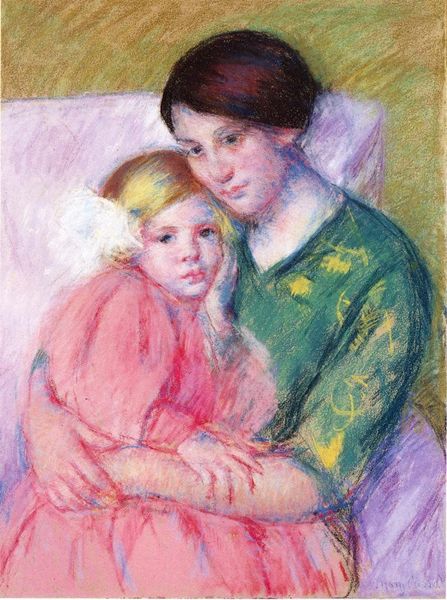
Dimensions: 78.74 x 63.5 cm
Copyright: Public domain
Curator: Mary Cassatt's "Maternal Tenderness," created around 1908, is a compelling piece currently held in a private collection. It exemplifies her interest in intimate, domestic scenes, rendered here with soft pastel strokes. Editor: It's surprisingly tender, even sentimental. The blurring of form created by the pastel gives it this wonderfully soft, almost tactile feel. The figures seem enveloped by the texture of the pastel itself. Curator: Absolutely. Cassatt, a key figure in Impressionism, frequently explored the theme of motherhood. Considering the patriarchal art world of her time, her focus on women's lives within the domestic sphere can be viewed as a quietly radical act, challenging prevailing representations of femininity. Her work often resonates with feminist theories critiquing traditional gender roles. Editor: It's interesting to think about the specific material choices, too. Pastel wasn't necessarily viewed as a serious medium. This raises questions about its potential use in constructing what was seen as "feminine" and whether Cassatt made use of it deliberately. What was the price and labor intensity in acquiring and producing those pastels in 1908, and how would that affect their cultural reception? Curator: Precisely. She was not merely depicting motherhood; she was actively participating in its visual construction. The softness, the blurring of lines...all of that is carefully considered, in concert with the evolving roles women were finding in the face of rising first wave feminist power. Editor: Looking closely, you see how the material reality affects the entire image—the dress made of quickly sketched lines with a beautiful white fabric rendered in delicate pastel, this reflects the rapidly industrializing economy and how it has altered the process in which fabrics were mass produced, cheaper for family consumption. The roughness is essential to the narrative, in my mind. It grounds the sweetness of the subject matter, giving it a material edge. Curator: That reading enriches my understanding significantly. It pushes beyond simply celebrating Cassatt's skill to considering the socioeconomic factors embedded in the materials themselves, contributing an undercurrent of modern anxieties. Editor: Exactly. We should think of not just what's being depicted, but how, and why that "how" takes precedence at this stage. Curator: Considering these intersecting narratives certainly broadens how we see Cassatt’s enduring social contribution, thank you! Editor: I agree. Examining artwork’s material conditions encourages critical perspectives about art and its place in society.
Comments
No comments
Be the first to comment and join the conversation on the ultimate creative platform.


